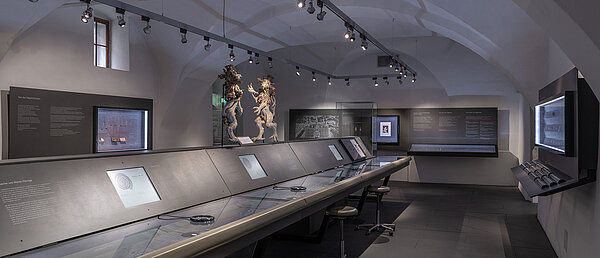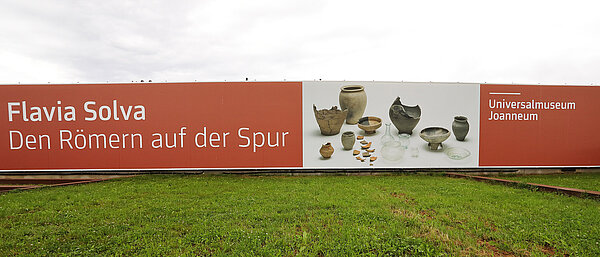Please note our winter closing times!
Archaeology Museum
Traces of Life
![Exhibition view of the permanent exhibition in the Archaeology Museum [Translate to English:] Ansicht Dauerausstellung Archäologiemuseum Schloss Eggenberg](/fileadmin/_processed_/4/e/csm_Archaeologie_Dauerausstellung_2023_20_906e5b5ab9.jpg)
![Exhibition view of the permanent exhibition in the Archaeology Museum [Translate to English:] Ansicht Dauerausstellung Archäologiemuseum Schloss Eggenberg](/fileadmin/_processed_/4/e/csm_Archaeologie_Dauerausstellung_2023_20_73ff0f5c5b.jpg)
Image Credits
Location
Archaeology Museum, Schloss Eggenberg
Show all
About the exhibition
The Archaeology Museum displays more than 1,200 objects which, as "traces of life", form the starting points for questions that have moved people for thousands of years. Highlights of the permanent exhibition include world-class objects from the Hallstatt period, such as the cult chariot from Strettweg or the mask from Kleinklein, as well as the most valuable Roman find from Styria, the silver cup from Grünau.
Object information reduced to facts is intended to create a clear separation between hidden fiction and facts.
The light wells offer the opportunity to offer educational programmes specially tailored to children and young people and to show smaller thematic units as "work in progress" while the scientific work is still in progress.
The Archaeology Museum sees itself as a place of constant communication, not only between museum visitors and scientists, but also between the visitors themselves.
Since September 2009, 1,221 archaeological objects have been on display in a new 600 m² building designed by BWM Architects in the park of Schloss Eggenberg. The building directly adjoins the multi-award-winning Lapidarium by PURPUR.architektur and adopts its design language.




















![Exhibition view of the permanent exhibition in the Archaeology Museum [Translate to English:] Ansicht Dauerausstellung Archäologiemuseum Schloss Eggenberg](/fileadmin/_processed_/4/d/csm_Archaeologie_Dauerausstellung_2023_26_cd5d3d9649.jpg)
![Exhibition view of the permanent exhibition in the Archaeology Museum [Translate to English:] Ansicht Dauerausstellung Archäologiemuseum Schloss Eggenberg](/fileadmin/_processed_/a/6/csm_Archaeologie_Dauerausstellung_2023_37_67e70c1651.jpg)

